Eugene Oregon, a newer project, many years in the making. Of all the places we visited, we spent the most time here, we went to their weekly meeting.
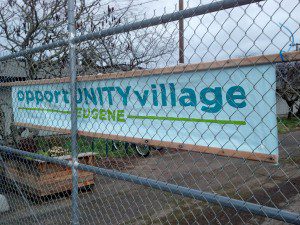
They seemed to have a strict screening process, a two week review before someone was accepted and when it comes to rule enforcement they preferred to think of it in terms of “interventions”. They seemed to have well run meetings, where they handled issues that come up. We laughed, as they had a very similar conversation as we have heard in the past – about who does the dishes. They had a ballot process for voting on people, which we liked because it is hard to vote against someone getting a home.
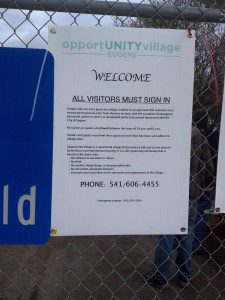
Each of the approximately 30 people did 8 hours of guard house every week, and then more hours volunteering around camp. The gate closes at 10pm every night, it gets locked.

They just spent thousands of dollars to build this yurt. The city had to approve the foundation and the structure. It has heat and it will serve as their common area.
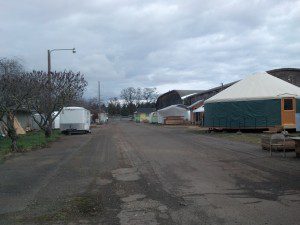
This is their kitchen area, they cook on propane stove and also had another stove that was donated for cooking in a large pot. The stove was pretty cool, but they were still figuring out how to use it. I think that is also how they heated the water to do the aforementioned dishes . . . which is why it is hard to do dishes. They house is the pantry where they keep their food. They had recently gotten a bunch of donations of cans of food that were expired, so they were figuring out how to dispose of the unwanted donation.
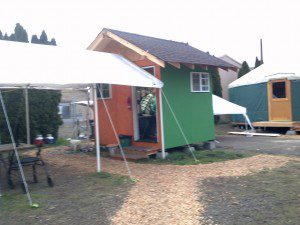
These huts are much cheaper than the houses and quicker to put up. There were probably about 6 of them and they cost about $250. Not sure how they would fare in Wisconsin.
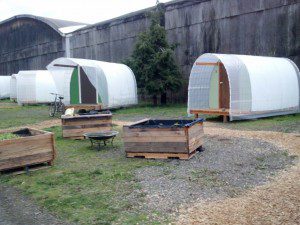
They had one electric pole. So only electricity in the common areas. When we were there there were several folks in the common area using computers and electricity for various reasons.
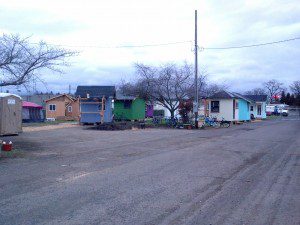
They were also in the process of building a shower. They currently don’t have any shower facilities and are using portapotties – they were thinking they might need to order more – but that is another expense.
They were making raised bed gardens, they can’t plant in the ground because there was a trailer park there and they were concerned that there were people cooking meth there. And they were concerned about what the city dumped on this soil.
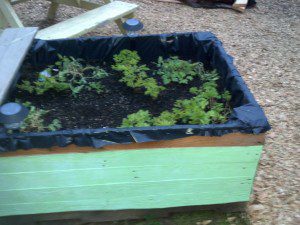
Some of the people waiting for a home were still sleeping in tents. Only two at the moment.
The land is city land located in an isolated area but it did have bus service – they said it was land no one else wanted and it was rented to them for a year and then when the city is ready to build storage for trucks they may have to move. I asked how they were going to move the houses and it was something they were confident they could figure out, but specific plans have not been made. The houses come apart if necessary, but they would prefer to move them on a flatbed truck.
People who live in the village weren’t really helping build the houses as much as they had wanted, but once the house is build they paint and roof and do the inside of the houses, to personalize them. The shop is nearby in the industrial area.
And here’s the finished houses.
They gave us a bunch of paperwork I still have to look over. It was a really pleasant visit and I’ll have more to say later I suspect! This was their third working community we visited. We also visited to tent encampments in Eugene, that will be tomorrow.

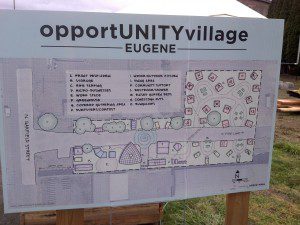
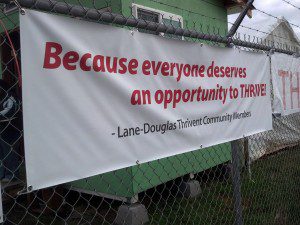
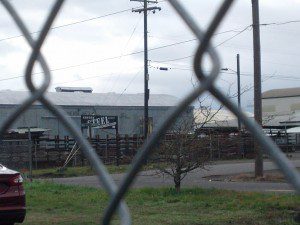
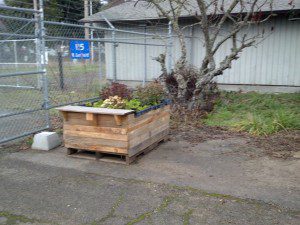
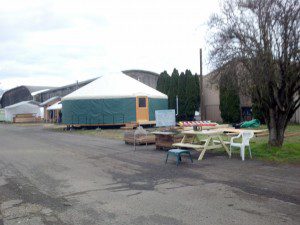
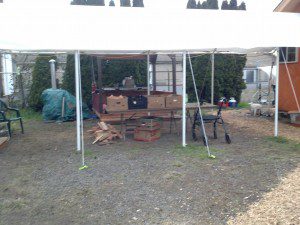
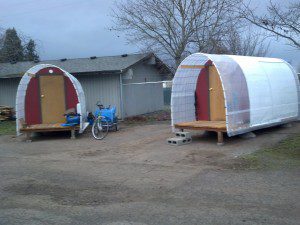
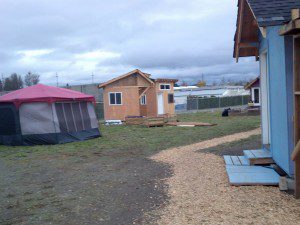
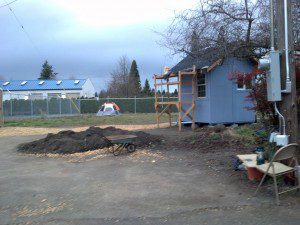
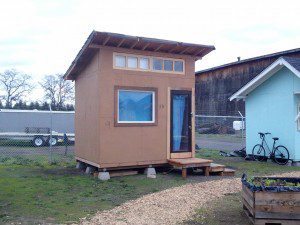
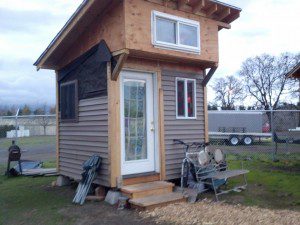
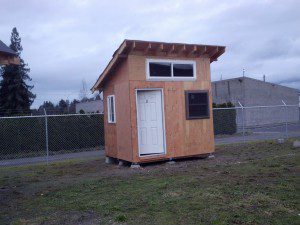
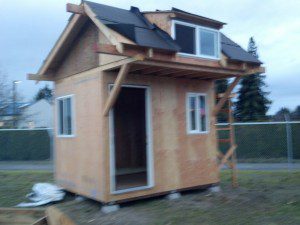
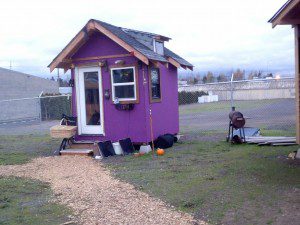
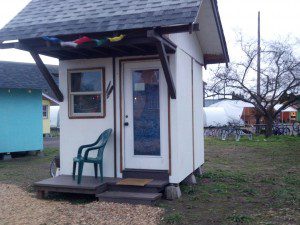
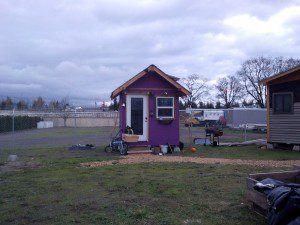
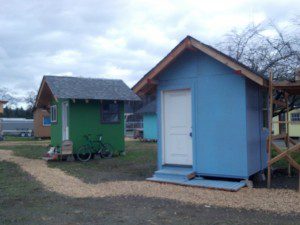
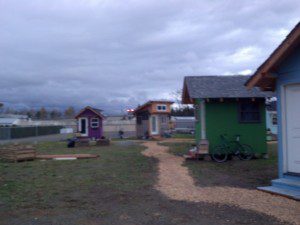
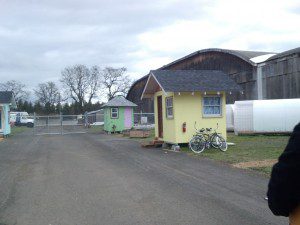
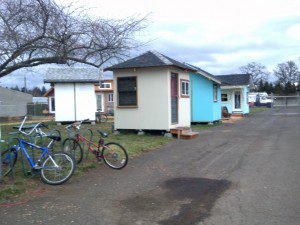







Like the article on Dignity Village in Portland Oregon, this article and photos has been very helpful. As a followup, did Opportunity Village have to relocate later? Any insight to be gained from the “paperwork” you where given, regarding tiny-house village sites and their ongoing management by residents?
Thank you.